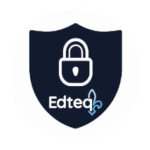Le Sommet sur le iPad en éducation du 1er mai a été riche en partage d’expérience et de bonnes pratiques, s’appliquant bien souvent à plusieurs technologies. Voici un compte-rendu de la conférence d’Annie Martin, d’Apple Canada, à propos de la transformation de l’enseignement à l’aide de la tablette numérique.
Comment favoriser le succès de l’intégration de l’iPad en classe? Annie Martin, spécialiste des technologies éducatives chez Apple, a proposé aux quelques 400 participants du 1er Sommet sur le iPad en éducation, tenu le 1er mai dernier à Montréal, plusieurs pistes intéressantes à ce sujet.
1. Savoir précisément pourquoi on veut acquérir des tablettes iPad (définir sa mission, vision). Elle donne l’exemple d’un enseignant qui avait d’abord imaginé sa classe et réussi à convaincre les parents grâce à sa vision structurée et à ses objectifs précis. En ayant l’appui de tous, la mise en place a été grandement facilitée. Voici quelques exemples de « pourquoi » : des questions de budget, une volonté de personnaliser l’apprentissage, favoriser la présence en classe, développer des compétences du 21e siècle, etc.
2. Ensuite, il faut pouvoir mesurer le succès. Pour cela, il faut définir des critères observables. Par exemple : commentaires des élèves, nombre d’absences, comportement. Mme Martin a fait rigoler l’audience en se rappelant une conversation avec un gestionnaire : « Je lui ai demandé quel était l’objectif de l’acquisition d’iPad pour son école, et sa réponse a été qu’il voulait récupérer le labo pour en faire une classe. Et voilà, son objectif était atteint! »
3. Aussi, il faut se former. « L’enseignant doit prendre en charge sa formation, pas seulement attendre d’être formé », estime-t-elle. Elle explique qu’il a été démontré qu’entre 5 et 14 h de formation continue par l’enseignant, on n’obtient aucun impact sur les résultats des élèves. « Il faut 49 h pour espérer 21 % d’impact sur les résultats. Impossible, dit-on! C’est pour cela qu’il faut que les enseignants acceptent d’être en partie responsables de leur formation. » Elle suggère à cet effet d’explorer le site ÉDUmobilesQC, du RÉCIT de la Commission scolaire des Chênes.
4. Puis, il faut changer et repenser ses pratiques. « On ne doit pas utiliser l’iPad en classe juste pour être cool et faire les mêmes projets qu’avant! » Mme Martin cite à cet effet le modèle SAMR, de Puentedura : il soutient que le réel changement s’opère sur 4 niveaux : la substitution (changer une façon de faire par une autre), l’augmentation (par exemple, ajouter une dimension multimédia à un contenu plus traditionnel), la modification (par exemple, proposer ses notes de cours dans un format comme iBooksAuthor, permettant l’ajout d’images, vidéos, animations 3D, mais aussi quiz interactif), puis la redéfinition (par exemple, l’intégration de nouvelles tâches d’apprentissage qui seraient impossibles sans la technologie).
5. Impliquer les élèves. Par exemple, avoir un code de déontologie pour l’utilisation des iPad en classe. « Idéalement, il faut le créer avec les élèves. Déterminez ensemble les conséquences du non-respect de ce code, et vous allez voir qu’ils sont plus sévères que nous! » Aussi, il est important d’impliquer les élèves en identifiant les « experts », ceux qui peuvent offrir de l’aide technique, etc.
Mme Martin a finalement rappelé qu’il est possible de faire appel à l’équipe d’Apple, autant au niveau pédagogique que technique, pour obtenir des renforts. « Au final, notre objectif à tous est de faire une réelle différence pour vos élèves. »




 Recevez l'Info #DevProf et l'Hebdo pour ne rien manquer des nouveautés de l'École branchée!
Recevez l'Info #DevProf et l'Hebdo pour ne rien manquer des nouveautés de l'École branchée!




